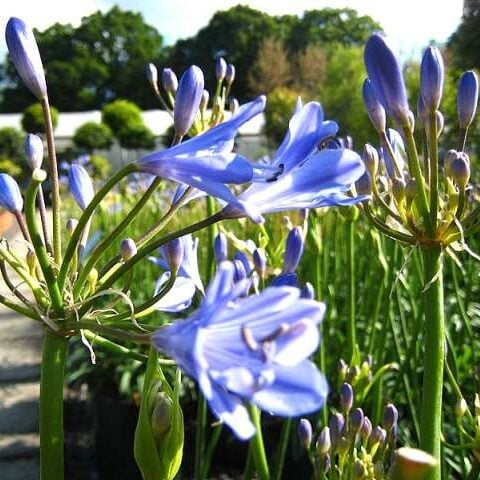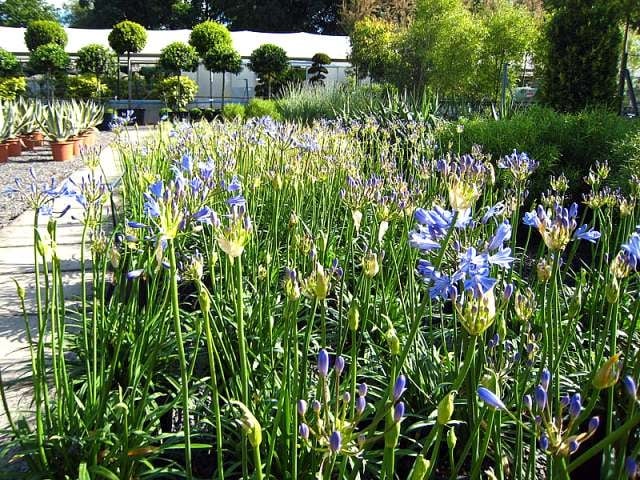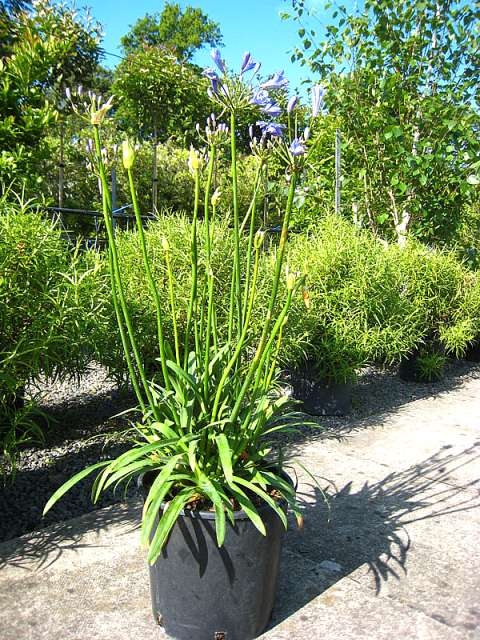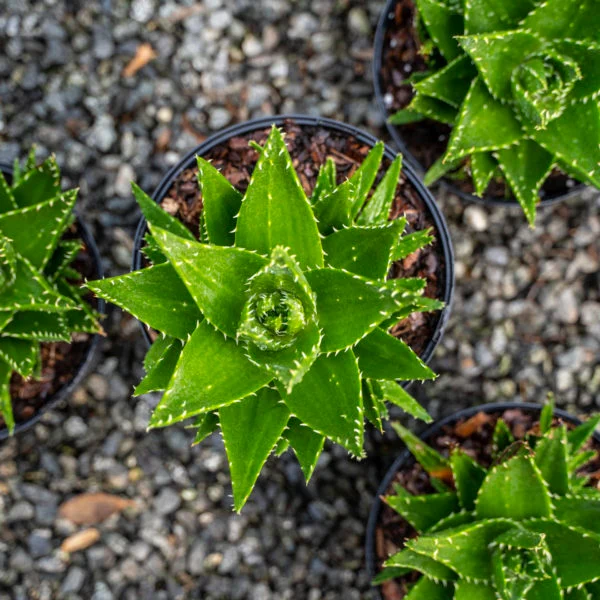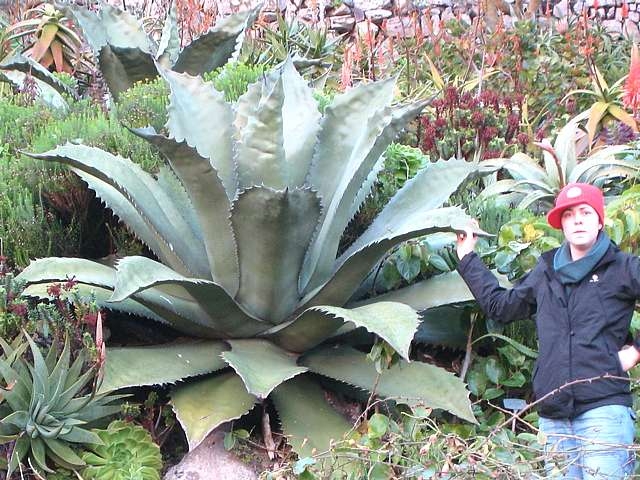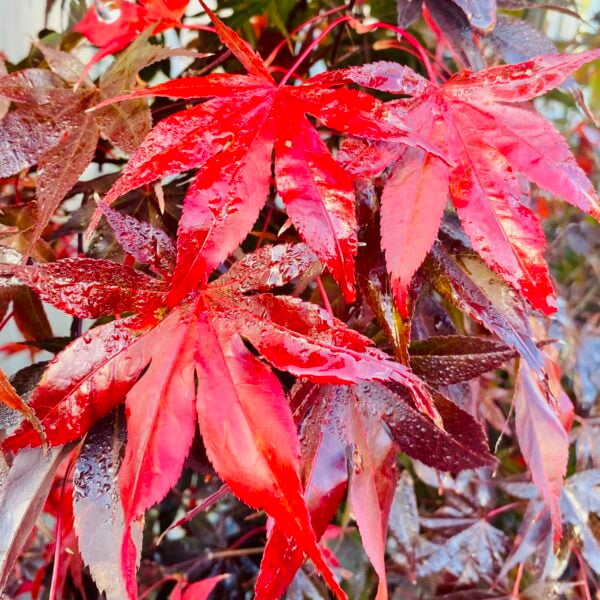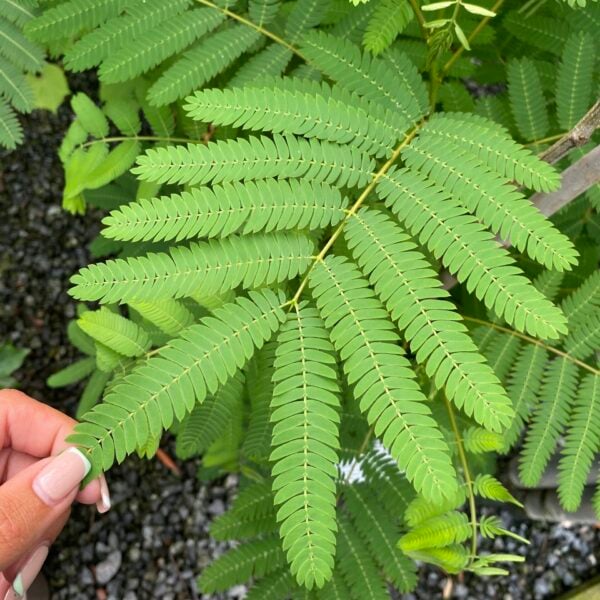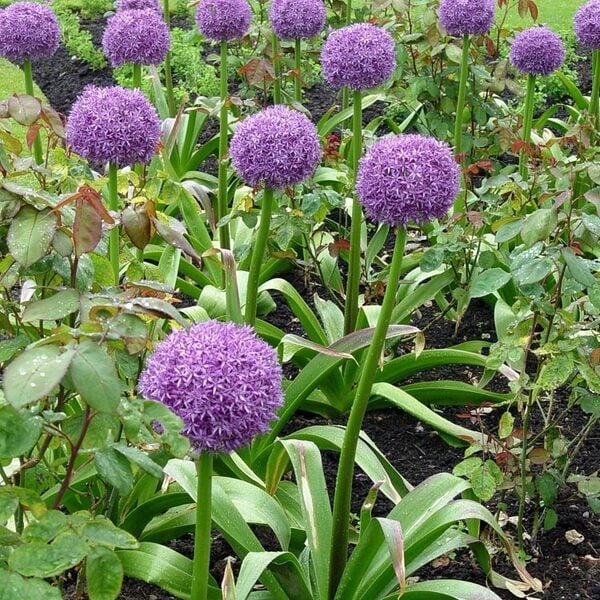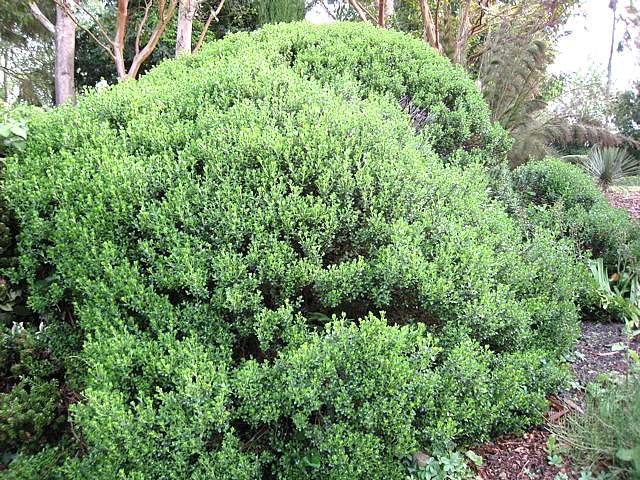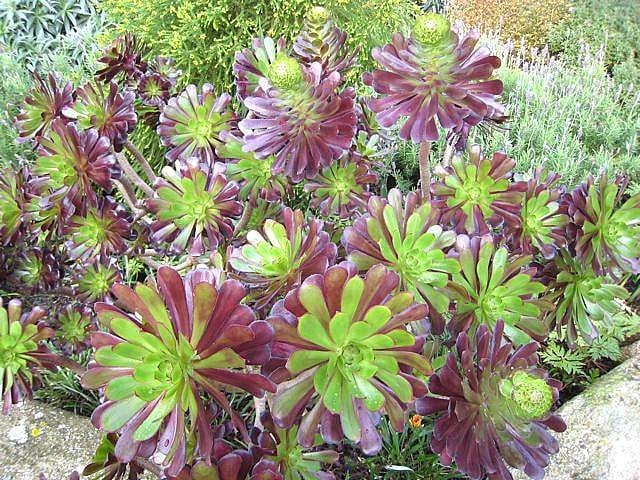Agapanthus ‘Blue Storm’ (Lily of the Nile)
A compact (1ft tall), free flowering herbaceous perennial with loads of large, beautiful, blue flowers for a long period during the summer. Please contact us for stock availability and sizes.

Hardiness level Amber
Plant these en masse for maximum impact. The flowers are more much numerous but much less tall (to 4ft max) than in the huge and better known Agapanthus africanus. Drifts of them work wonders. The clue's in the name - it's an enormous amount of blue. It's also hardier than Agapanthus africanus but dies down in the winter. Flowers for several weeks during mid-summer.
Best in sun in any reasonably well drained soil.
A comparative comment on Agapanthuses : The big one (Agapanthus africanus) and the little ones (Agapanthus 'Blue Storm' and 'Snow Storm') cannot really be compared. It's tempting because they're both Agapanthuses and they both have green strappy leaves and either blue or white flowers but the big one stands alone and are so big that they can be used almost like topiary - a pair in pots either side of an entrance for example. There's no reason why you couldn't do the same with the smaller ones but the smaller ones really lend themselves to being planted in drifts - blue or white rivers wending their way through the garden. The point is, one's not comparing like with like.
Additional Information |
|
|---|---|
| Soil Type | |
| Light | |
| Plant Type | Big Leaves / Exotics, Evergreen, Flowers, Ground Cover, Semi Evergreen |
| Continent of Origin | |
| Specialist Plants | |
| Situation | Coastal, Mild City Gardens, Plants for Pots, Seaside, Sheltered Garden |
| Flower Colour | |
| Hardiness | |




